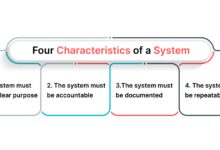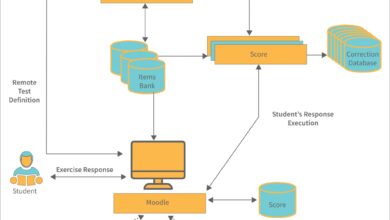System Development: 7 Powerful Steps to Master the Process
Ever wondered how complex software systems come to life? It all starts with system development—a structured journey from idea to implementation that powers everything from mobile apps to enterprise platforms. Let’s break it down.
What Is System Development and Why It Matters

System development refers to the process of creating, designing, testing, and deploying information systems to meet specific organizational or user needs. It’s not just about writing code—it’s a holistic approach that combines planning, analysis, design, implementation, and maintenance to deliver functional, scalable, and secure systems.
Defining System Development in Modern Context
In today’s digital-first world, system development is the backbone of innovation. Whether it’s a banking application, a hospital management system, or an AI-driven analytics tool, every digital solution begins with a well-structured development lifecycle. The goal is to build systems that are efficient, user-friendly, and aligned with business objectives.
- It involves both technical and managerial processes.
- It applies to software, hardware, and integrated systems.
- It supports digital transformation across industries.
According to the IEEE Computer Society, effective system development reduces project failure rates by up to 40% when best practices are followed.
Key Objectives of System Development
The primary aim of system development is to deliver value. This means solving real problems, improving efficiency, and enabling growth. But beyond that, it also focuses on sustainability, security, and adaptability.
- Meet user requirements accurately and efficiently.
- Ensure system reliability and performance under load.
- Support future scalability and integration with other systems.
“A system is never just a collection of parts. It’s a purposeful integration of components working toward a common goal.” — Donella Meadows, Systems Thinker
The 7 Phases of System Development Life Cycle (SDLC)
The System Development Life Cycle (SDLC) is a proven framework used to guide the creation of high-quality systems. It breaks the entire process into manageable phases, each with specific goals, deliverables, and checkpoints. Following SDLC helps teams avoid chaos, reduce risks, and ensure alignment with stakeholder expectations.
Phase 1: Requirement Gathering and Analysis
This is where the foundation is laid. Developers and analysts work closely with stakeholders—clients, end-users, managers—to understand what the system should do. This phase answers questions like: What problems are we solving? Who will use it? What features are essential?
- Conduct interviews, surveys, and workshops.
- Document functional and non-functional requirements.
- Create use cases and user stories.
Poor requirement gathering is responsible for over 30% of project failures, according to the Standish Group CHAOS Report.
Phase 2: System Design
Once requirements are clear, the next step is designing the system architecture. This includes both high-level structure (modules, components, data flow) and low-level details (database schema, UI wireframes, API specifications).
- Choose between monolithic or microservices architecture.
- Design user interface mockups using tools like Figma or Adobe XD.
- Define data models and relationships using ER diagrams.
A well-documented design phase reduces rework during coding by up to 50%, as noted by research from IEEE Xplore.
Phase 3: Implementation (Coding)
This is where developers write the actual code. Based on the design documents, programming teams start building the system using appropriate languages, frameworks, and tools. This phase can vary greatly depending on the methodology used—Agile, Waterfall, DevOps, etc.
- Select programming languages (e.g., Python, Java, JavaScript).
- Use version control systems like Git for collaboration.
- Follow coding standards and conduct peer reviews.
Modern system development often uses CI/CD pipelines to automate testing and deployment, significantly speeding up delivery.
Phase 4: Testing
No system goes live without rigorous testing. This phase ensures the software works as intended, is free of critical bugs, and meets performance and security standards.
- Perform unit testing for individual components.
- Conduct integration testing to check module interactions.
- Run system and user acceptance testing (UAT) with real users.
Automated testing tools like Selenium, JUnit, and Postman are widely used to improve coverage and efficiency.
Phase 5: Deployment
After successful testing, the system is deployed into the production environment. This can be done in various ways: big bang (full rollout), phased (gradual), or parallel (old and new systems run together).
- Prepare deployment scripts and rollback plans.
- Train end-users and support staff.
- Monitor system behavior post-deployment.
DevOps practices have revolutionized deployment, enabling continuous delivery with minimal downtime.
Phase 6: Operation and Maintenance
Once live, the system enters the operational phase. This involves monitoring performance, fixing bugs, applying patches, and ensuring uptime. Maintenance is often the longest phase in the SDLC.
- Address user-reported issues promptly.
- Optimize performance based on usage patterns.
- Apply security updates regularly.
Studies show that maintenance can consume up to 70% of a system’s total lifecycle cost.
Phase 7: Evaluation and Enhancement
The final phase isn’t really an end—it’s a feedback loop. Organizations evaluate how well the system meets its goals and identify areas for improvement. This leads to upgrades, new features, or even a complete system overhaul.
- Collect user feedback through surveys and analytics.
- Analyze system logs and performance metrics.
- Plan for future iterations or version upgrades.
This phase ensures the system remains relevant and valuable over time.
Popular System Development Methodologies Compared
Choosing the right methodology is crucial for the success of any system development project. Different approaches suit different types of projects, team sizes, and organizational cultures. Let’s explore the most widely used ones.
Waterfall Model: The Traditional Approach
The Waterfall model is one of the earliest and most structured approaches to system development. It follows a linear sequence: each phase must be completed before the next begins.
- Clear documentation at every stage.
- Easy to manage due to rigid structure.
- Ideal for projects with well-defined requirements.
However, it lacks flexibility. Changes are difficult and costly once the project moves forward. As noted by ScienceDirect, Waterfall is best suited for government or safety-critical systems where compliance is key.
Agile: The Flexible Framework
Agile is the most popular methodology today, especially in software-centric system development. It emphasizes iterative development, customer collaboration, and responsiveness to change.
- Work is divided into sprints (usually 2–4 weeks).
- Daily stand-ups keep teams aligned.
- Customers provide feedback after each iteration.
According to the State of Agile Report, over 70% of organizations use Agile to improve delivery speed and adaptability.
“Individuals and interactions over processes and tools.” — Agile Manifesto
DevOps: Bridging Development and Operations
DevOps isn’t just a methodology—it’s a culture. It integrates development and IT operations to enable faster, more reliable system development and deployment.
- Uses automation for testing, integration, and deployment.
- Employs tools like Jenkins, Docker, Kubernetes, and Ansible.
- Focuses on continuous improvement and monitoring.
Organizations using DevOps report 46 times more frequent deployments and 96 times faster recovery from failures (Puppet State of DevOps Report).
The Role of System Analysis in Development
System analysis is the investigative phase that bridges business needs with technical solutions. It ensures that the system being developed actually solves the right problem.
What Does a System Analyst Do?
A system analyst acts as a translator between business stakeholders and technical teams. They gather requirements, analyze workflows, and recommend solutions that align with organizational goals.
- Identify inefficiencies in current processes.
- Evaluate feasibility of proposed systems (technical, economic, operational).
- Create detailed specifications for developers.
They often use modeling tools like UML (Unified Modeling Language) to visualize system behavior.
Tools and Techniques Used in System Analysis
Effective analysis relies on structured techniques to capture and validate information.
- Data Flow Diagrams (DFD) to map how data moves through a system.
- Entity-Relationship Diagrams (ERD) for database design.
- SWOT analysis to assess strengths, weaknesses, opportunities, and threats.
Modern analysts also use BPMN (Business Process Model and Notation) to model complex workflows.
Design Principles for Effective System Development
Good design is invisible—users don’t notice it because everything works smoothly. But behind the scenes, solid design principles ensure systems are robust, maintainable, and scalable.
Modularity and Separation of Concerns
Breaking a system into independent modules makes it easier to develop, test, and maintain. Each module should have a single responsibility.
- Follow the Single Responsibility Principle (SRP).
- Use microservices to decouple functionalities.
- Enable parallel development across teams.
This approach reduces complexity and improves fault isolation.
Scalability and Performance Optimization
A system must handle growth—more users, more data, more transactions. Scalability can be vertical (more power) or horizontal (more servers).
- Use load balancers and caching mechanisms (e.g., Redis).
- Design databases for read/write optimization.
- Monitor performance with tools like New Relic or Datadog.
Netflix, for example, uses a highly scalable cloud-based architecture to serve millions of users simultaneously.
Security by Design
Security shouldn’t be an afterthought. In system development, it must be embedded from the start.
- Implement authentication and authorization (e.g., OAuth, JWT).
- Encrypt sensitive data at rest and in transit.
- Conduct regular vulnerability assessments and penetration testing.
The OWASP Top 10 provides a critical checklist for securing web applications during development (OWASP.org).
Challenges in System Development and How to Overcome Them
Despite best efforts, system development projects often face obstacles. Recognizing these challenges early can prevent costly delays and failures.
Scope Creep and Requirement Volatility
One of the biggest threats to project success is changing requirements. Stakeholders may request new features mid-project, leading to scope creep.
- Use change control boards to evaluate new requests.
- Set clear boundaries in the project charter.
- Adopt Agile to accommodate changes in a controlled way.
According to PMI, 52% of failed projects cite poor requirement management as a key factor.
Communication Gaps Between Teams
Miscommunication between developers, analysts, and clients can lead to mismatched expectations and flawed outputs.
- Hold regular cross-functional meetings.
- Use collaboration tools like Jira, Slack, or Microsoft Teams.
- Document decisions and share them with all stakeholders.
Transparency is key to alignment.
Technical Debt and Code Quality
Technical debt refers to shortcuts taken during development that make future changes harder. While sometimes necessary, unchecked debt can cripple a system.
- Conduct regular code reviews.
- Refactor legacy code proactively.
- Use static analysis tools (e.g., SonarQube) to detect issues.
Google, for instance, enforces strict code quality standards across its massive codebase.
Emerging Trends Shaping the Future of System Development
The field of system development is evolving rapidly. New technologies and practices are redefining how systems are built, deployed, and maintained.
Low-Code and No-Code Platforms
These platforms allow non-developers to build applications using visual interfaces and drag-and-drop tools. They accelerate development and empower business users.
- Tools like Microsoft Power Apps, OutSystems, and Mendix are gaining traction.
- Reduce dependency on IT departments for simple apps.
- Enable rapid prototyping and MVP development.
Gartner predicts that by 2025, 70% of new applications will use low-code/no-code technologies.
Artificial Intelligence in Development
AI is no longer just a feature—it’s becoming a development assistant. From code generation to bug detection, AI tools are transforming how developers work.
- GitHub Copilot suggests code in real-time using AI.
- AI-powered testing tools can predict failure points.
- Machine learning models help optimize system performance.
AI-driven development is expected to reduce coding time by up to 30% in the next five years.
Cloud-Native Development
Modern system development increasingly relies on cloud infrastructure. Cloud-native approaches use containers, microservices, and serverless computing to build resilient, scalable systems.
- Leverage platforms like AWS, Azure, and Google Cloud.
- Use Kubernetes for container orchestration.
- Adopt serverless functions (e.g., AWS Lambda) for event-driven tasks.
Cloud-native development enables faster time-to-market and lower infrastructure costs.
Best Practices for Successful System Development Projects
While every project is unique, certain best practices consistently lead to success. Adopting them can significantly increase the chances of delivering a high-quality system on time and within budget.
Start with a Clear Vision and Scope
Define the project’s purpose, goals, and boundaries from the outset. A clear vision aligns all stakeholders and prevents misdirection.
- Create a project charter with objectives and success criteria.
- Define the Minimum Viable Product (MVP) to prioritize core features.
- Get formal sign-off on scope before development begins.
This foundation sets the tone for the entire project.
Engage Stakeholders Early and Often
Stakeholder involvement is critical. Their input ensures the system meets real needs and gains user acceptance.
- Hold regular feedback sessions.
- Use prototypes to gather early reactions.
- Communicate progress transparently.
Active engagement reduces resistance and increases buy-in.
Invest in Quality Assurance
Testing isn’t a phase—it’s a mindset. Building quality into every stage of system development prevents costly fixes later.
- Implement test-driven development (TDD).
- Automate regression tests.
- Perform security and performance testing early.
Quality assurance is not an expense—it’s an investment in reliability.
What is the main goal of system development?
The main goal of system development is to create reliable, efficient, and user-friendly information systems that meet specific business or user requirements while ensuring scalability, security, and maintainability over time.
What are the most common system development methodologies?
The most common methodologies include Waterfall (linear and structured), Agile (iterative and flexible), and DevOps (integration of development and operations for continuous delivery). Each has its strengths depending on project needs.
How long does a typical system development project take?
Project duration varies widely—from a few weeks for small apps to several years for large enterprise systems. Agile projects typically last 3–6 months per major release, with ongoing iterations.
What is the role of a system analyst?
A system analyst gathers and analyzes user requirements, evaluates system feasibility, and translates business needs into technical specifications. They act as a bridge between stakeholders and developers.
Why is maintenance important in system development?
Maintenance ensures the system continues to function correctly, adapts to changing needs, and remains secure. It often accounts for the majority of a system’s total lifecycle cost and is essential for long-term success.
System development is a dynamic and essential discipline in our digital world. From defining requirements to deploying and maintaining systems, each phase plays a critical role in delivering value. By understanding the SDLC, choosing the right methodology, applying best practices, and embracing emerging trends, organizations can build systems that are not only functional but future-ready. Whether you’re a developer, manager, or stakeholder, mastering the art and science of system development is key to innovation and success.
Recommended for you 👇
Further Reading:









